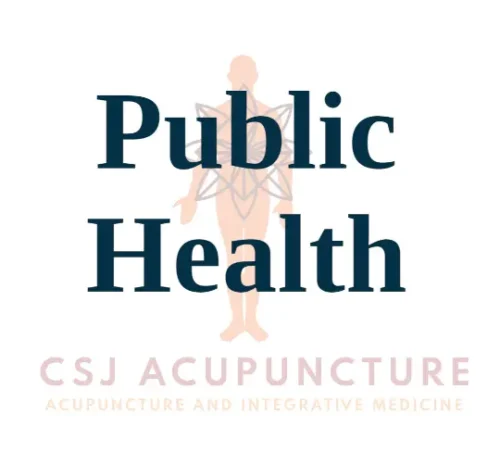This post may contain affiliate links and ads in which we may earn a small percentage of purchases.
Table of Contents
I wanted to talk about the pathogen known as “wind” (Feng, pronounced “Fung”), specifically what is wind as defined by Traditional Chinese Medicine (TCM) and the most common clinical manifestation, known as wind-cold and wind-heat.

If you’ve ever quit because meal plans felt overwhelming, this approach keeps it simple. The 21-Day Smoothie Diet gives you daily guidance, a detox reset, and easy recipes—so you can focus on consistency instead of planning. Instant digital access. Start today.
What is Wind in TCM Theory?
Wind in TCM is a very interesting pathogen because it is related not only to the concept of an external pathogen but also to movement within the body.
According to the U.S. Energy Information Administration, wind in from a geo-science perspective, is caused by the “uneven heating of the earth’s surface by the sun”.1
In TCM, wind is often seen as a transition, a movement, and can be an internal or external factor. When we speak of wind as an external pathogen, we’re looking at conditions like wind-heat, wind-cold, and wind-dampness, but not just limited to. However that is a great place to start.
A clear and beginner-friendly guide covering over 400 acupuncture points, ideal for students and learners.
 View Book
View Book
A stainless-steel acupuncture pen and gua sha set for massage, reflexology, and tension relief.
 View Product
View Product
Now, you might wonder how this all makes sense initially, but it helps to understand that TCM uses natural elements as foundational concepts. The medicine is based on over a 2 thousand years of study, during which time these ideas were formed around basic principles such as fire, water, wind, and earth. Interestingly, while we have metal and fire, lightning isn’t directly attributed in TCM, which is interesting, and maybe a concept to examine in the future.
Wind is associated with the liver Qi in TCM theory. The liver, in turn, is associated with various functions and imbalances which may be associated with wind, but not always. However, knowing the connection will help to understand more complex conditions and diseases.
External vs Internal Wind
Wind can be categorized into two main types: interior and exterior, which align with the principles of yin and yang. When considering wind from a TCM perspective, it’s essentially the gateway to understanding how colds and similar conditions operate.
What we commonly refer to as a “cold” in modern terms is viewed differently in TCM. We’ll break this down into a few distinct categories to better understand the various aspects and implications of wind in the body.
In Traditional Chinese Medicine (TCM), “Wind” is associated with multiple other types of pathogens that can invade the body and cause illness, such as a cold or infection. These categories include Cold, Heat, Damp, and Toxic Heat. Additionally, there are also concepts like Phlegm-Damp and Wind-Water. These pathogens represent the ways in which external factors like the common cold or more severe infections such as COVID-19 or SARS can attack the body according to TCM principles.
But ideally, what happens with Wind is that you can think of the carrier, whether it’s hot or cold, as being determined by the symptoms.
What is Wind Cold?
When it’s Cold, it’s your traditional Cold in Chinese medicine, where you’re talking about the sniffling, the coughing, the sneezing, and the runny nose with clear or white mucus? Slight body aches, headache, possibly sinus congestion. Those symptoms are classified under Wind-Cold, and are treated as so.
What is Wind Heat?
Wind-Heat can manifest as a traditional cold, but it is characterized by distinct symptoms. When a patient presents with symptoms, we must determine whether they are exhibiting traditional cold patterns or Wind-Heat patterns. One key differentiator is the presence of a sore throat, which is often the initial symptom in Wind-Heat cases. This is typically a pronounced soreness, rather than a mere scratchiness.
Further diagnosis is based on the characteristics of the phlegm and mucus. If the phlegm has a yellowish tinge, is predominantly yellow, or contains blood, it is indicative of a Heat pattern. In such cases, we would categorize and treat the condition accordingly, using Wind-Heat treatment protocols.

What is Wind Dampness?
Dampness is characterized by the retention of water, resulting in a sense of heaviness. This pattern can be further categorized into distinct sub types based on the manifesting symptoms (Wind Damp + Cold or Wind Damp + Heat). It can become complicated, and differentiation of symptoms is very important clinically do decide on the the correct treatment regimen. Many tropical diseases are classified under Wind-Damp invasion in TCM theory.
This is just an introduction into understanding the wind pathogen based on the Traditional Chinese Medicine perspective. For more information please read past articles and visit our resource section.
This information is not intended to diagnose or treat. Please consult with your primary care provider for any health conditions.
- U.S. Energy Information Administration. 2023. Wind Explained. Retrieved https://www.eia.gov/energyexplained/wind/ ↩︎
Medical Disclaimer: This article is for informational and educational purposes only and is not a substitute for professional medical advice, diagnosis, or treatment. Always consult a qualified healthcare provider with any questions about a medical condition or treatment.






